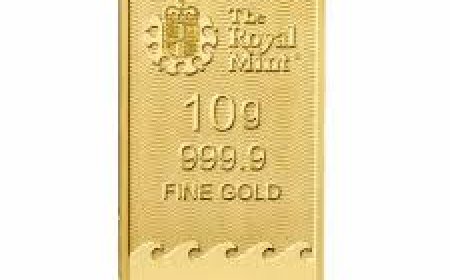How To Eat Conch Fritters Like a Jacksonville Local
How to Eat Conch Fritters Like a Jacksonville Local On the sun-drenched shores of Northeast Florida, where the Atlantic meets the Intracoastal Waterway, one dish rises above the rest as a cultural icon: the conch fritter. More than just a fried appetizer, conch fritters are a rite of passage for anyone who calls Jacksonville home—or wishes they did. For locals, eating a conch fritter isn’t merely
How to Eat Conch Fritters Like a Jacksonville Local
On the sun-drenched shores of Northeast Florida, where the Atlantic meets the Intracoastal Waterway, one dish rises above the rest as a cultural icon: the conch fritter. More than just a fried appetizer, conch fritters are a rite of passage for anyone who calls Jacksonville home—or wishes they did. For locals, eating a conch fritter isn’t merely about satisfying hunger; it’s about tradition, texture, timing, and territory. To eat one like a true Jacksonville local is to understand its history, savor its nuances, and embrace the unspoken rituals that turn a simple bite into a sensory experience.
This guide is your definitive manual to eating conch fritters the Jacksonville way. Whether you’re a newcomer drawn by the aroma drifting from a beachside shack, a tourist who’s heard the hype, or a Florida native looking to deepen your appreciation, this tutorial will transform how you experience this beloved delicacy. You’ll learn not just how to eat it—but how to *feel* it, when to eat it, where to find the best, and why locals refuse to settle for anything less than perfection.
Conch fritters are not found on every menu in Florida. They’re a coastal specialty, deeply rooted in the Bahamian and Caribbean culinary traditions brought to Florida’s shores by generations of fishermen and migrants. In Jacksonville, where the salt air carries whispers of the Old Bahamas Road and the seafood markets still buzz with early-morning dock chatter, conch fritters are more than food—they’re identity.
By the end of this guide, you won’t just know how to eat a conch fritter. You’ll know how to *live* it.
Step-by-Step Guide
Step 1: Understand What You’re Eating
Before you take that first bite, you must know what you’re holding. Conch fritters are made from conch meat—a large, edible sea snail native to the Caribbean and the Florida Keys. The meat is finely chopped or ground, then mixed into a seasoned batter typically made from flour, cornmeal, milk, eggs, and a blend of spices including paprika, cayenne, garlic powder, and fresh parsley. Diced bell peppers, onions, and sometimes celery are folded in for texture and sweetness.
The mixture is deep-fried in hot oil until golden brown and crisp on the outside, with a tender, slightly chewy interior. The result is a bite-sized orb of flavor: salty, savory, spicy, and subtly sweet. Unlike fish cakes or crab cakes, conch fritters have a distinct elasticity and a briny depth that lingers on the palate.
Locals don’t confuse conch with other shellfish. They know the difference between conch, crab, shrimp, and scallop. And they won’t hesitate to correct you if you do. Understanding this distinction is the first step to eating like a local.
Step 2: Choose the Right Setting
A conch fritter eaten at a tourist trap near the Jacksonville Beach Pier is not the same as one eaten at a weathered, family-run shack on the south end of Atlantic Boulevard. The setting matters.
Locals gravitate toward places that have been around for decades—where the counters are sticky with decades of cocktail sauce, the fryers never cool down, and the owner remembers your name. Think places like:
- Shoreline Seafood in Neptune Beach
- Big Fish Grill on 3rd Street North
- Beachside Grill near the Dames Point Bridge
These aren’t the places with neon signs and Instagram influencers. They’re the places where the menu has handwritten updates taped to the window and the fish is still cleaned on the dock.
Don’t eat conch fritters at a sit-down restaurant with linen napkins unless you’re prepared for a watered-down version. The best fritters are served in paper baskets, on plastic trays, with no fork in sight.
Step 3: Order Them Right
Ordering conch fritters like a local means knowing what to ask for—and what not to say.
Never say, “Can I get the conch fritters with extra sauce?” Locals don’t ask for extra sauce. They assume it’s coming. Instead, say: “Two orders of conch fritters, please. And the tartar sauce on the side.”
Why on the side? Because locals know that dipping sauce should be a tool, not a drowning agent. Too much sauce masks the delicate flavor of the conch. A light drizzle or a quick dunk is all you need.
Also, don’t ask for “seasoned” or “spicy” versions. If the fritters aren’t seasoned right, they’re not worth eating. Jacksonville locals trust the fry cook. If you’re unsure, just say: “The usual.” That’s code for: “I know what I’m doing.”
Step 4: Wait for the Perfect Moment
Timing is everything. Conch fritters are best eaten within three minutes of being fried. Locals watch the fryer like hawks. When the basket is pulled from the oil, they’re already reaching for their napkins.
Letting them sit for more than five minutes turns the crisp exterior soggy and dulls the flavor. A cold conch fritter is a tragedy. A lukewarm one? A sin.
Here’s the local ritual: as soon as the basket arrives, you lift the lid just enough to let the steam escape. You don’t want to burn yourself, but you also don’t want to lose the aroma. Then you grab one with your fingers—no utensils—and hold it just long enough to cool the outer edge. You don’t blow on it. You let it rest in your palm, letting the heat radiate slowly. That’s patience. That’s respect.
Step 5: The First Bite
Now, the moment of truth.
Locals don’t bite into the center. They take a small, deliberate bite from the edge. Why? Because the crust is the crown jewel. It’s the contrast between the crunchy, lightly greasy exterior and the soft, spiced interior that defines the experience. The first bite should be a crunch followed by a yielding chew.
As you chew, let the flavors bloom. You should taste the sea—salt, minerality, faint sweetness—mingled with the warmth of garlic and the brightness of parsley. The onion and pepper should be detectable but not overpowering. The batter should be light, not doughy. If you taste raw flour or greasy oil, you’re at the wrong place.
Swallow slowly. Don’t rush. Let the aftertaste linger. A great conch fritter doesn’t vanish—it lingers like a good song.
Step 6: Dipping—The Art of Restraint
Now, the sauce. The two most common options are tartar sauce and cocktail sauce. Locals almost always choose tartar. Why? Because it’s cooler, creamier, and doesn’t compete with the conch’s natural brininess. Cocktail sauce, with its tomato and horseradish punch, is acceptable—but only if you’re a visitor.
Here’s the technique: dip the *edge* of the fritter, not the center. You’re not trying to coat it. You’re trying to enhance it. One quick, light dip. One bite. Then another. Repeat.
Never dunk. Never drag. Never smother. That’s not eating. That’s drowning your food.
Some locals keep a small ramekin of lemon wedges nearby. A single squeeze of fresh lemon juice over the fritter after the first bite can elevate the flavor dramatically. But again—less is more. One wedge per order. That’s the rule.
Step 7: Eat With Your Hands
No forks. No knives. No spoons. Conch fritters are finger food, and locals treat them as such.
Using utensils is seen as pretentious. It suggests you’re unfamiliar with the culture. You’re not dining at a French bistro. You’re on the boardwalk, shirt unbuttoned, hair salty, sand in your shoes.
Keep a stack of napkins nearby. You’ll need them. The oil will drip. The batter will crumble. That’s part of the charm. Wipe your fingers between bites. Don’t be embarrassed. It’s part of the experience.
And never, ever eat them while wearing your good clothes. Locals know: conch fritters are a messy joy. Wear something you don’t mind getting a little greasy.
Step 8: Pair It Right
A conch fritter doesn’t stand alone. It’s part of a larger ritual.
Locals pair them with:
- Ice-cold beer—especially a crisp lager like Budweiser, Coors Light, or a local favorite like Florida Cracker Ale.
- Sweet tea—unsweetened or lightly sweetened, served over ice in a tall glass.
- Florida orange juice—freshly squeezed, no pulp, served in a plastic cup.
Wine? Too fancy. Soda? Too sweet. Water? Too plain. The drink should be cool, refreshing, and slightly salty—something that cleanses the palate without overwhelming it.
Some locals will add a side of fries or hushpuppies, but never at the expense of the fritters. The fritters are the star. Everything else is supporting cast.
Step 9: Eat Slowly, But Don’t Dwell
There’s a rhythm to eating conch fritters like a local. It’s not about savoring every crumb like a gourmet tasting. It’s about rhythm, repetition, and ritual.
You eat one. You take a sip of your drink. You wipe your fingers. You grab another. You repeat. There’s no pause for photos. No commentary. Just quiet enjoyment.
Locals don’t talk about the fritters while eating them. They let the food speak. Conversation comes after the basket is empty.
Step 10: Know When to Stop
Most people eat three to five fritters in one sitting. Locals know when to stop. Why? Because conch fritters are rich. They’re fried. They’re salty. Too many, and your tongue goes numb, your stomach protests, and the magic fades.
Five is the upper limit. Three is ideal. If you’re still hungry after three, you probably need a side of coleslaw or a piece of grilled fish—not another fritter.
And if you’re still craving more the next day? That’s when you know you’ve found your spot.
Best Practices
Practice 1: Always Eat Fresh
Conch fritters are not a dish that reheats well. Microwaving them turns them into rubbery, greasy bricks. Air frying? Acceptable in a pinch—but never preferred. The only acceptable method for reheating is a toaster oven on low for 3–4 minutes, just to take the chill off. Even then, locals say: “Better to wait until tomorrow and get a fresh batch.”
Practice 2: Avoid Frozen or Pre-Made
There’s a reason why Jacksonville locals avoid grocery store frozen conch fritters. They’re bland, over-battered, and often made with imitation conch or low-quality seafood. Real conch is expensive. If a place is selling fritters for $5 a dozen, they’re not using fresh conch. They’re using surimi or squid. Locals know the difference. So should you.
Practice 3: Respect the Fryer
Every great conch fritter starts with clean oil. Locals can tell when the fryer hasn’t been changed in days. The oil smells faintly fishy. The fritters are darker than golden—almost brown. The texture is heavy. If you notice this, leave. No exceptions.
Ask the cook: “When was the oil last changed?” If they hesitate, walk away. A true conch fritter shop changes the oil daily—or even twice a day during peak season.
Practice 4: Don’t Ask for Substitutions
Conch fritters are not customizable. You don’t ask for “no onions,” “less spice,” or “gluten-free batter.” The recipe is sacred. The balance is intentional. Asking for changes marks you as an outsider.
If you have allergies, say so politely—but understand that the kitchen may not be able to accommodate you. That’s not rudeness. That’s tradition.
Practice 5: Eat Seasonally
While conch fritters are available year-round in Jacksonville, the best ones are made between late spring and early fall. Why? Because that’s when the conch is most abundant, and the meat is at its sweetest. Winter conch can be tougher, less flavorful. Locals know this. They wait for the season.
Practice 6: Bring Cash
Many of the best conch fritter spots in Jacksonville still operate on a cash-only basis. Credit cards? They’re accepted—but only if the machine works. And if the machine doesn’t work? You’re out of luck.
Always carry $20 in small bills. You’ll need it. And if you’re paying with a $100 bill? You’re not just a tourist—you’re a target.
Practice 7: Learn the Lingo
Locals have their own terms:
- “The basket” = one order of conch fritters (usually 6–8 pieces)
- “The dip” = tartar sauce
- “The fry” = the cooking process
- “A real one” = made with actual conch, not imitation
- “Shack-style” = served in paper, no plates, no forks
Using these terms signals that you’re not just eating—you’re participating.
Practice 8: Share the Experience
Conch fritters are meant to be shared. Locals rarely eat them alone. They bring friends. They point out the best ones. They argue over which spot is the best. That’s part of the culture.
Don’t hoard them. Don’t eat the whole basket by yourself. Pass the basket. Let others have their turn. That’s how you earn respect.
Tools and Resources
Tool 1: The Paper Napkin Stack
You can’t eat conch fritters without napkins. Locals keep a stack of at least 10–15 napkins on the table at all times. They’re not just for wiping hands—they’re for blotting oil, catching crumbs, and even wrapping up leftovers (if you’re brave enough to try).
Pro tip: Fold the napkins into quarters before you start. It makes them last longer and keeps your hands cleaner.
Tool 2: The Lemon Wedge Holder
Many local spots keep a small ceramic dish or plastic cup with lemon wedges near the condiment station. It’s not just for show. Locals use them. If you don’t see lemon wedges, ask for them. If they say “no,” you’re at the wrong place.
Tool 3: The Cooler
Every local has a small cooler in their car or by the beach chair. It’s filled with ice-cold drinks to pair with the fritters. You don’t need a fancy cooler—just a sturdy one that keeps things cold for hours. Popular choices: Bud Light, Florida Cracker Ale, or a bottle of orange soda.
Tool 4: The Beach Towel
It’s not a tool for eating—but it’s essential for the full experience. After eating, locals often head straight to the beach. Sand, salt, sun, and fried seafood. That’s the Jacksonville way. Bring a towel. You’ll thank yourself later.
Resource 1: The Jacksonville Seafood Map
Several local blogs and Facebook groups maintain updated lists of the best conch fritter spots. Search for “Jacksonville conch fritter map 2024” or join “Jacksonville Seafood Lovers” on Facebook. These communities are the real insiders. They’ll tell you which spot is having a “fritter special” this weekend or which cook just retired.
Resource 2: The Conch Fritter Podcast
“Fry Me to the Moon” is a local podcast hosted by two Jacksonville food historians. Each episode dives into the history of a different seafood dish. Their episode on conch fritters features interviews with third-generation fry cooks and Bahamian immigrants who brought the recipe to Jacksonville in the 1950s. It’s available on Spotify and Apple Podcasts.
Resource 3: The Conch Fritter Festival
Every October, the Jacksonville Beach Conch Fritter Festival draws thousands. It’s not a commercial event—it’s a community celebration. Local vendors compete for the “Golden Fryer” award. There are live music, boat parades, and, of course, unlimited fritters. Locals don’t just attend—they volunteer. It’s the one day a year when the whole city eats conch fritters together.
Resource 4: The Recipe Archive
While you won’t find the “secret recipe” online, the Jacksonville Public Library’s Florida History Room holds handwritten recipes from the 1940s–1970s. These include notes from fishermen’s wives who made fritters for their husbands after long days at sea. Access is free. Ask for the “Coastal Florida Seafood Collection.”
Real Examples
Example 1: The Fisherman’s Wife
Martha, 78, has been making conch fritters since she was 16. Her husband fished the Atlantic off Jacksonville for 42 years. Every Friday, she sets up a small table on her porch near the Intracoastal. She sells fritters for $1 each—cash only. No sign. No menu. Just a chalkboard that says: “Fritters Today.”
Locals know to show up at 4 p.m. If you’re late, they’re gone. She uses conch she buys from a Bahamian fisherman who comes in on Tuesdays. “I don’t use anything else,” she says. “If it ain’t real, it ain’t worth frying.”
Her secret? “Let the batter rest overnight. And never, ever use margarine.”
Example 2: The Tourist Who Learned
James, from Ohio, visited Jacksonville for the first time in 2019. He ate his first conch fritter at a chain restaurant near the pier. He thought it was “weird.” Too chewy. Too salty. He complained to the waiter.
He came back the next year. This time, he asked a local for advice. He was directed to Shoreline Seafood. He ate three fritters. Sat in silence. Then he said: “I get it now.”
He came back in 2023 and brought his entire family. Now, he hosts a “Conch Fritter Tour” for his friends every summer. He even wrote a blog post: “How I Learned to Love the Chew.”
Example 3: The Fry Cook Who Got It Right
Ricky, 34, took over his father’s grill at Big Fish Grill in 2018. His dad had been frying conch fritters for 37 years. Ricky changed nothing—except he started buying conch from a single supplier in the Keys. “Dad always said, ‘If you change the meat, you change the soul.’”
Now, Ricky’s fritters are considered the best in the city. He doesn’t advertise. He doesn’t have social media. But every Friday, people line up before dawn. He smiles, nods, and says: “First one’s on the house.”
Example 4: The Festival That Changed Everything
In 2021, the Jacksonville Beach Conch Fritter Festival had its first-ever “Local vs. Tourist” tasting challenge. Ten locals and ten tourists blind-tasted five different fritters. The locals scored the “Shack-Style” fritters from a family-run vendor 9.2 out of 10. The tourists picked the most expensive, “gourmet” version from a downtown restaurant.
When the results were revealed, the locals cheered. The tourists were stunned. “They didn’t even taste the conch,” one tourist said. “They tasted the batter.”
That year, the winning vendor sold out in 47 minutes.
FAQs
Are conch fritters actually made from conch?
Yes—when they’re made right. Real conch fritters use the meat of the queen conch, a large sea snail harvested from the Caribbean and Florida waters. Some cheaper versions use imitation seafood like surimi or squid. Locals can tell the difference by the texture: real conch is slightly chewy and springy; imitation is rubbery and bland.
Can I eat conch fritters if I’m allergic to shellfish?
No. Conch is a mollusk, and shellfish allergies include mollusks. Even if you’re only allergic to crustaceans like shrimp or crab, you should avoid conch. Cross-contamination is common in fryers that handle multiple seafood items.
Why are conch fritters so expensive?
Conch is labor-intensive to harvest and process. It must be cleaned, tenderized, and chopped by hand. The supply is limited, and demand is high in coastal regions. A pound of fresh conch can cost $15–$25. That’s why a basket of six fritters costs $12–$18. If it’s cheaper, it’s not real.
Is there a vegetarian version of conch fritters?
Some places offer “conch-style” fritters made with hearts of palm, jackfruit, or mushrooms. But locals don’t consider these true conch fritters. They’re a creative alternative, not a replacement.
Can I freeze conch fritters to eat later?
You can, but you shouldn’t. Freezing ruins the texture. The batter becomes soggy, and the conch loses its elasticity. If you must, freeze them on a baking sheet, then transfer to a sealed bag. Reheat in a 350°F oven for 8–10 minutes. But again—fresh is best.
Do I need to be from Jacksonville to eat conch fritters the right way?
No. But you do need to respect the tradition. The rules aren’t about geography—they’re about reverence. If you follow the steps, use the right tools, and eat with intention, you’re eating like a local—even if you’re from Nebraska.
Why do locals never use forks?
Because conch fritters are meant to be eaten with your hands—like a piece of corn on the cob or a fried chicken wing. It’s tactile, messy, and real. Using a fork turns it into a formal dish, and that’s not the point. The mess is the memory.
What’s the best time of day to eat conch fritters?
Anywhere between 3 p.m. and 7 p.m. That’s when the fryers are hottest, the oil is fresh, and the crowd is relaxed. Early morning? Too quiet. Late night? Too greasy. Afternoon is the sweet spot.
Can I make conch fritters at home?
You can—but it’s hard. Finding fresh conch outside of Florida is nearly impossible. Most online sellers sell frozen or pre-processed conch, which lacks flavor. If you’re determined, try a reputable seafood supplier like Florida Keys Seafood or a Bahamian market. But be warned: the batter is the easy part. The conch? That’s the art.
Why is this dish so important to Jacksonville?
Because it represents resilience, community, and heritage. Conch fritters were brought here by Bahamian fishermen in the early 1900s. They worked the waters, raised families, and passed down recipes. Today, those same recipes are still being fried in the same shacks, by the same families. Eating a conch fritter isn’t just about food—it’s about honoring those who came before.
Conclusion
To eat conch fritters like a Jacksonville local is to embrace a tradition that’s as much about culture as it is about cuisine. It’s about patience, precision, and pride. It’s about knowing when to wait, when to act, and when to simply be still and savor.
There are no shortcuts. No hacks. No apps that will tell you where the best fritters are. The only way to learn is to show up—to the same shack, at the same time, with the same hunger, and the same respect.
When you take that first bite—the crunch, the salt, the warmth, the aftertaste—you’re not just tasting seafood. You’re tasting history. You’re tasting the Atlantic breeze. You’re tasting the sweat of fishermen, the laughter of families, the quiet pride of a city that knows its roots.
So go ahead. Grab a napkin. Walk to the shore. Find the shack with the faded sign and the fryer that never sleeps. Order the basket. Eat with your hands. Don’t overthink it.
And when you’re done? Look out at the water. Feel the salt on your skin. And know this: you’re not just eating conch fritters.
You’re living like a Jacksonville local.

























